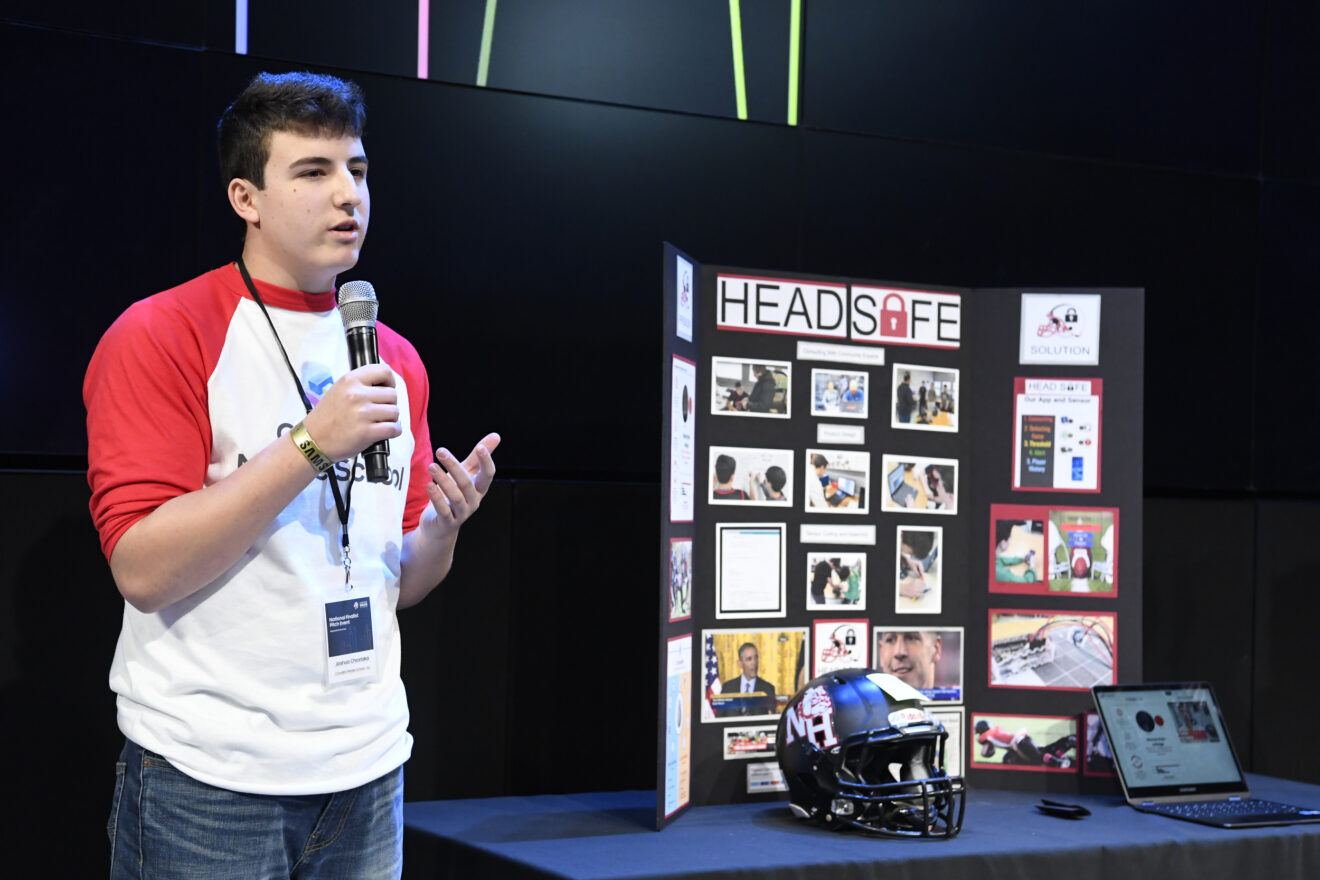How often do students get to solve problems they care about? Passion should drive learning, but so often other responsibilities—curriculum, testing, scheduling and district mandates, among others—crowd it out the classroom.
This year my students got to wrestle with an issue that matters to them: concussion prevention. They were inspired by one of their friends who had recently suffered the effects of a concussion. We made this problem the focal point of our project for Samsung’s Solve for Tomorrow contest. The result: a sensor for football helmets that can help detect the signs of potential concussions.
Here’s what we learned through the project.
Start with the bad ideas. My students struggled at first to find a problem they cared about. We spent several days trying to come up with the next big thing, only to be left staring at a blank screen. Kevin Bookhouser’s 20% Time Classroom Model inspired me to let students come up with bad ideas: go scuba diving without a tank, rid the world of left socks and teach penguins to fly, among others. This allowed students freedom to begin thinking outside the box. And when they did that, they hit on the idea of developing a device to prevent concussions.
Embrace the struggle. My students had an extremely limited knowledge in coding but they kept at it. They spent several hours working to debug their code in order to develop their product. I could see a different level of determination and grit throughout this project because they cared deeply about their topic.
Engage the community. I have zero expertise in concussions, helmets, electrical and software engineering so I contacted people in my community who could bring their professional knowledge to the project. A parent who specializes in computer engineering came in to talk about how we could possibly detect concussions and code the devices to give us meaningful data. A local football coach, who also happens to be a doctor, provided the medical insight. And a football referee gave us feedback on how this would work in an actual game. Talking with these professionals helped make the project real to the students; it increased the rigor enormously.
Explore multiple solutions. The first answer is almost always never the best answer. The students explored a several solutions—and resources—to solve the problem. We originally thought a pressure sensor would be work but, as we researched university studies, we discovered that six out of 10 concussions go undiagnosed or undetected. Our goal became focusing not just on the hard hits but rather those smaller, cumulative hits that add up throughout the course of a game or season. We added an accelerometer to detect sudden movement in the head and built a formula to set a threshold for a possible concussion-causing hit.
The students also found out that no two concussions are alike. This discovery led them to develop a personalized user input system within the app.
This project is the perfect example of how to make passion part of the learning experience. They learned and honed critical skills—identifying an issue, poring through research, working with industry professionals—by working together on an issue that was important to them.
Jonathan Harvey is a teacher at Cavallini Middle School located in Upper Saddle River, New Jersey. His students were named a 2018 winner of Samsung’s Solve for Tomorrow contest. The contest is open to students in grades 6-12 to identify a problem they care about in their community and develop a solution. The deadline to apply is October 30, 2018.
Tech Tips is a weekly column in SmartBrief on EdTech. Have a tech tip to share? Contact us at [email protected]
____________________________________
Like this article? Sign up for SmartBrief on EdTech to get news like this in your inbox, or check out all of SmartBrief’s education newsletters , covering career and technical education, educational leadership, math education and more.
